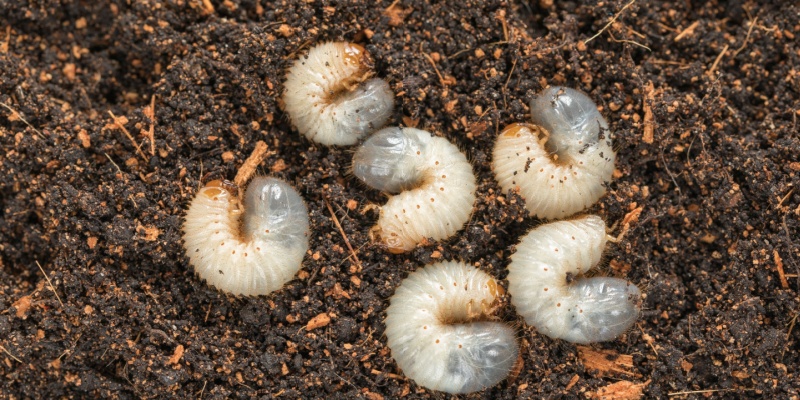One of the most significant threats to a thriving lawn is the presence of lawn grubs. Understanding the life cycle of these destructive larvae is essential for effective prevention and control. By gaining insights into their development stages, you can implement targeted strategies to protect your lawn from grub infestations.
What Are Lawn Grubs?
Lawn grubs are the larval stage of various beetle species, including Japanese beetles, June beetles, and European chafers. These small, white or cream-colored larvae with brown heads feed on the roots of grass, causing significant damage to lawns. Understanding their life cycle is crucial for effective management and prevention.
The Life Cycle of Lawn Grubs
Lawn grubs undergo complete metamorphosis, progressing through four distinct stages: egg, larva (grub), pupa, and adult beetle. Each stage plays a vital role in the development and proliferation of grub populations.
1. Egg Stage
- Duration:
Late summer to early fall
- Description:
Adult beetles lay eggs in the soil, typically in moist, well-drained areas. A single female beetle can lay hundreds of eggs, increasing the potential for grub infestations.
- Environmental Conditions:
Warm temperatures and adequate moisture are essential for egg development. Ohio’s humid continental climate provides ideal conditions for egg-laying.
2. Larval Stage (Grub)
- Duration:
Late spring to early fall
- Description:
Eggs hatch into grubs, which are the most destructive stage. Grubs feed on grass roots, weakening the lawn and making it susceptible to drought stress and disease.
- Feeding Habits:
Grubs consume the roots of grass, causing the grass to wilt and die. This feeding activity results in unsightly brown patches and thinning turf.
3. Pupal Stage
- Duration:
Late summer
- Description:
After reaching maturity, grubs enter the pupal stage. During this phase, they transform from larvae into adult beetles.
- Development:
Pupation occurs in the soil, where grubs undergo physical changes to become adult beetles.
4. Adult Beetle Stage
- Duration:
Late summer to early fall
- Description:
Adult beetles emerge from the soil to mate and lay eggs, continuing the life cycle.
- Behavior:
Adult beetles are attracted to light and are active at night. They feed on foliage, flowers, and fruits but are less harmful to lawns compared to the larval stage.
Seasonal Timing and Its Impact on Grub Control
Understanding the timing of each life cycle stage is crucial for implementing effective grub control measures. Here’s how the seasons influence grub development and control strategies:
Spring: Emergence and Early Feeding
- Lifecycle Impact:
Grubs begin to feed actively in the spring as temperatures rise and grass begins to grow.
- Control Strategy:
Implement pre-emergent treatments to prevent eggs from hatching. Proper lawn maintenance, including regular mowing and watering, can also reduce grub vulnerability.
Summer: Peak Feeding and Growth
- Lifecycle Impact:
Grubs reach their peak feeding activity during the summer, causing maximum damage to grass roots.
- Control Strategy:
Apply targeted insecticides to reduce grub populations. Ensure adequate lawn irrigation to promote strong grass growth, making it harder for grubs to cause extensive damage.
Fall: Pupation and Egg-Laying
- Lifecycle Impact:
Grubs enter the pupal stage, transforming into adult beetles. Adult beetles lay eggs in the soil, setting the stage for the next generation.
- Control Strategy:
Use post-emergent treatments to eliminate remaining grubs before they pupate. Aerate the soil to disrupt grub development and reduce their survival rates.
Winter: Dormancy and Preparation
- Lifecycle Impact:
Grubs remain dormant in the soil during the cold winter months, protected from extreme temperatures.
- Control Strategy:
Focus on lawn cleanup and soil health. Conduct soil testing to identify nutrient deficiencies and prepare for spring fertilization, which can strengthen grass and resist future infestations.
Understanding the life cycle of lawn grubs is essential for effective prevention and control. By recognizing the stages of grub development and implementing targeted strategies at each phase, you can protect your Bexley, OH lawn from extensive damage and maintain its lush, green appearance. For comprehensive grub management and expert lawn care solutions, reach out to Weed Busters. We can help you protect your lawn from grubs.

